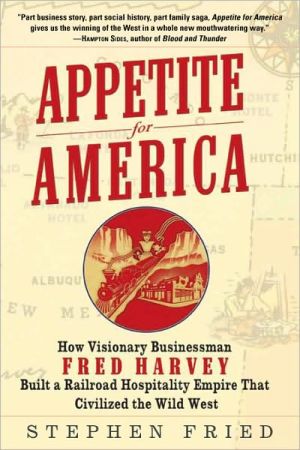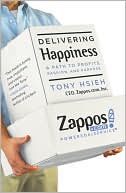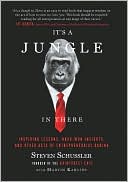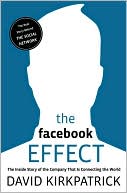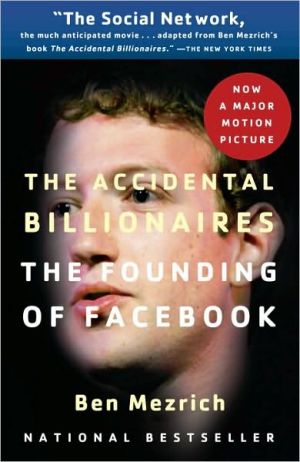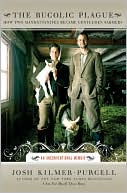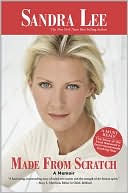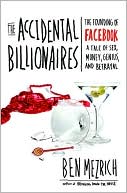Appetite for America: How Visionary Businessman Fred Harvey Built a Railroad Hospitality Empire That Civilized the Wild West
The legendary life and entrepreneurial vision of Fred Harvey helped shape American culture and history for three generations—from the 1880s all the way through World War II—and still influence our lives today in surprising and fascinating ways. Now award-winning journalist Stephen Fried re-creates the life of this unlikely American hero, the founding father of the nation’s service industry, whose remarkable family business civilized the West and introduced America to Americans.\ Appetite for...
Search in google:
The legendary life and entrepreneurial vision of Fred Harvey helped shape American culture and history for three generations—from the 1880s all the way through World War II—and still influence our lives today in surprising and fascinating ways. Now award-winning journalist Stephen Fried re-creates the life of this unlikely American hero, the founding father of the nation’s service industry, whose remarkable family business civilized the West and introduced America to Americans.Appetite for America is the incredible real-life story of Fred Harvey—told in depth for the first time ever—as well as the story of this country’s expansion into the Wild West of Bat Masterson and Billy the Kid, of the great days of the railroad, of a time when a deal could still be made with a handshake and the United States was still uniting. As a young immigrant, Fred Harvey worked his way up from dishwasher to household name: He was Ray Kroc before McDonald’s, J. Willard Marriott before Marriott Hotels, Howard Schultz before Starbucks. His eating houses and hotels along the Atchison, Topeka, and Santa Fe railroad (including historic lodges still in use at the Grand Canyon) were patronized by princes, presidents, and countless ordinary travelers looking for the best cup of coffee in the country. Harvey’s staff of carefully screened single young women—the celebrated Harvey Girls—were the country’s first female workforce and became genuine Americana, even inspiring an MGM musical starring Judy Garland.With the verve and passion of Fred Harvey himself, Stephen Fried tells the story of how this visionary built hisbusiness from a single lunch counter into a family empire whose marketing and innovations we still encounter in myriad ways. Inspiring, instructive, and hugely entertaining, Appetite for America is historical biography that is as richly rewarding as a slice of fresh apple pie—and every bit as satisfying.*With two photo inserts featuring over 75 images, and an appendix with over fifty Fred Harvey recipes, most of them never-before-published. The New York Times - Jane and Michael Stern Fried's book details the values of generations of Harveys, and in doing so provides an expansive chronicle of dining out in America.
Prologue\ WHO THE HELL IS FRED HARVEY?\ \ On that spring night in 1882, the drunken cowboys riding through northern New Mexico could have been forgiven for squinting in disbelief at the sight of the Montezuma Hotel. It did appear to be a hallucination.\ \ The Montezuma was one of the most astonishing architectural creations in America— although perhaps most astonishing was its location. It was nestled in a gorgeous middle of nowhere, in the foothills of the Sangre de Cristo Mountains six miles outside of Las Vegas, New Mexico, an old Santa Fe Trail town that the railroad had only recently connected to civilization. The largest wood-frame building in the United States— some ninety thousand square feet, with 270 guest rooms— the Queen Anne–style Montezuma featured a dining room that seated five hundred, a casino, a breathtaking wine cellar, eleven bowling alleys, a billiard hall, and an immense therapeutic bathing facility offering six different kinds of baths and douches, so patrons could fully experience the medicinal powers of the underground hot springs.\ \ The service at the Montezuma was brilliant, with staff imported from the best hotels in New York, London, Chicago, and St. Louis. And the cuisine was amazingly ambitious. The food combined the expertise of classically trained chefs from the restaurant capitals of the world with fresh regional American ingredients— fruit, vegetables, and shellfish, as well as delicacies like green turtles and sea celery harvested by pearl- diving Yaqui tribesmen— to which few other kitchens in the country had access, and which most chefs wouldn’t come to fully appreciate for almost another century. Open for only a few weeks, the resort was already attracting dukes and princesses and presidents, who quickly booked passage on the Atchison, Topeka & Santa Fe, the upstart railroad whose newly laid tracks were the only way to get there.\ \ In front of the Montezuma was a large park, exquisitely landscaped with shade trees and rare flowers, planted in three train- car loads of imported sod and topsoil. At the center was a huge fountain, flanked by lawns for tennis and croquet, an archery range, and even a zoo, where the deer and the antelope literally played. The free-form park was illuminated, as was the building itself, by thousands of gaslights fed by the hotel’s own generating station.\ \ So when “Red John” and his men approached on horseback that evening, they couldn’t believe their bloodshot eyes.\ \ The cowboys rode first to the park, where they hollered and shot their guns in the air while galloping across the manicured bluegrass and graveled walks. The commotion could be heard throughout the hotel, from its grand entranceway to its cavernous main dining room. There it reached a tall, slim man in his mid- forties, with a perfectly groomed Van Dyke beard, deep, cautious eyes, and senses that were always cocked. He tried to ignore the noise and enjoy his dinner, but soon threw down his linen napkin and rose abruptly from his canebacked chair.\ \ The man was dressed fastidiously in a dark blue suit with a waistcoat and dangling watch fob, the formal uniform of a Victorian gentleman from his homeland of England. But he walked quickly, with the nervous energy of America, drawing the attention of the dining room staff and some of the guests as he passed.\ \ By the time he left the dining room, the cowboys had dismounted and were running riot through the hotel. He could hear them in the billiard hall, where they were taking target practice with the Indian relics and curios displayed above the bar, and shooting the tops off the private- label liquor bottles on the sideboard.\ \ “Boys, put up your guns!” the Englishman called out, striding into the room.\ \ “Who the hell are you?” Red John yelled.\ \ “My name is Fred Harvey,” he replied. “I run this place. And I will not have any rowdies here. If you don’t behave like gentlemen, you can’t stay here and you can’t come again. Now put up your guns and take a drink with Fred Harvey!”\ \ Although he had been in America for thirty years, Fred still retained his British accent, which made some Westerners titter.\ \ But as the cowboys laughed, cursed, and taunted him, and hotel guests started gathering, he walked over and grabbed Red John by the collar. In a single motion, the fastidious Englishman yanked the dusty desperado over the bar and pinned him to the floor.\ \ “You mustn’t swear in this place,” he told the stunned cowboy. There was a moment of silence— and then Red John told his men to stand down.\ \ “Fred Harvey is a gentleman, boys,” he declared, brushing himself off. “I say, let’s have those drinks.”\ \ When the drinks were done, they were served a midnight breakfast as well— the breakfast for which Fred Harvey was becoming famous. The freshest eggs and steak available in the country, shipped directly from farms in refrigerated train cars. Pan- size wheat cakes stacked six high. Quartered wedges of hot apple pie. And cup after cup of the best damn coffee these cowboys had ever tasted in their lives.\ \ Red John and his men never made trouble at the Montezuma again.\ \ But they still wanted to know, as did more and more people across the country:\ \ Who the hell is Fred Harvey?\ More than a century later, I am peering over the lip of the Grand Canyon in my pajamas at five o’clock in the morning. And I’m wondering the same thing.\ \ As the sun slowly illuminates the canyon walls, I am reminded of why there is substantial literature just explaining why words cannot describe what I’m seeing. But as I turn away from the canyon, I take in another sight— less awe inspiring but in many ways equally intriguing, because it was created by man, by Americans, and plunked here on the very edge of the Divine Abyss.\ \ It is El Tovar, the rustically majestic hotel that has afforded me the luxury of rolling out of a plush bed at sunrise, shuffling in my slippers down a carved oak staircase, and stepping outside to have the Grand Canyon pretty much to myself. El Tovar is, arguably, the most in-demand hotel in the world: Most of the guest rooms are booked up more than a year in advance, and an astonishing number of trips are planned around their availability.\ \ El Tovar is also one of the last places where Fred Harvey lives on. The founder of the family business that created this hotel— and America’s first hospitality empire— he still symbolically oversees every detail of its daily life, from his moody portrait hanging in the main lobby, next to where the maître d’ arrives each morning at six thirty to greet the throng of tourists queued for the renowned breakfast- with- a- view. In the painting, he looks formidable and, frankly, a bit anxious, a clenched fist protruding from his black waistcoat.\ \ Most visitors to the Grand Canyon don’t have an inkling of why the Englishman in this portrait matters, or how he changed America. They are not aware that there was a time, not that long ago, when Fred Harvey was one of the most famous and intriguing men in the country—“ a food missionary,” as one prominent New York critic called him, on a quest to civilize the United States one meal at a time. They don’t know that his waitresses— the legendary Harvey Girls— were the first major female workforce in America, allowing single women for the first time to travel independently, earn a decent living, and, over time, help settle the American West. They don’t know that his restaurants, his hotels, and his Harvey Girls were once so much a part of American culture that in the 1940s his legend spawned a best- selling novel, and then an Oscar- winning MGM musical starring Judy Garland at the height of her career, which had the whole country singing along with her about the joys of exploring America “On the Atchison, Topeka, and the Santa Fe.”\ \ I was similarly unenlightened when I first encountered the Fred Harvey saga during a visit to the Grand Canyon in the early 1990s. I discovered him, as so many others have, in a sepia- toned photo in a hotel brochure. But then I started tripping across pieces of his story and his legacy in travels all over the country, although mostly in the areas that, as a born- and- bred Easterner, I think of as America’s “better half ”: the Southwest and the Midwest (which was originally the West, or at least the western frontier). Over the years, Fred Harvey has become something of an obsession, because it seems that the more I learn about him, his family, his business, and his world, the more I understand about my homeland, and how it came to be. Seen through the prism of the Harvey family saga, the late 1800s— a period many of us slept through in high school history class— become a powerful, riveting drama of a great nation expanding and uniting, one steel rail at a time. And the formative years of the “American Century” take on a different meaning.\ \ So, who the hell was Fred Harvey?\ \ An Englishman who came to America in the 1850s, he built a family and a career and then, in his early forties, started a revolutionary business feeding train passengers in the Wild West along the Santa Fe railroad. While he died famous and wealthy, he was also a curiosity— a man out of time— because at the height of the Gilded Age, he became something much better understood today: the founding father of the American service industry. That’s why his story and his methods are still studied in graduate schools of hotel, restaurant, and personnel management, advertising, and marketing. He is especially popular in the buzzwordy fields of “branding” and “brand extension,” because “Fred Harvey” was actually the first widely known and respected brand name in America, established years before Coca- Cola.\ \ “Fred Harvey” is also the name of the company he founded. Not Fred Harvey Inc. or The Fred Harvey Company. Just Fred Harvey. Why that is turns out to be one of the great untold family business sagas in American history— a tale not just about one brilliant, driven man and his empire but also about his largely unsung son Ford, who actually ran the company far longer than his father, but who stayed out of the spotlight so the public would think famous Fred was still alive, an ingenious marketing device. Because of Fred and Ford Harvey, this innovative family business played a crucial role in American culture from the post–Civil War era all the way through World War II.\ \ Fred Harvey ran all the restaurants and hotels along the country’s largest railroad, the Santa Fe between Chicago and Los Angeles; went on to serve the nation’s cross- country drivers on Route 66, the first superhighway; and even played a vital role in the formative, thrilling, and scary years of the airline business— because Fred’s grandson Freddy was an original partner in TWA with Charles Lindbergh and Henry Ford.\ \ Fred Harvey’s “eating houses” were prototypes of the disparate dining experiences that characterize American eating: They had formal, sit- down dining rooms (in which even cowboys were expected to wear jackets), attached to large casual dining areas with long curved counters (the genesis of the classic American diner), attached to take- out coffee and sandwich stands (the original Starbucks). Yet this curious Englishman turned out to be more than just a brilliantly successful manager of hotels and restaurants and a true Horatio Alger story come to life (during the time when Alger actually was writing those stories). He created the first national chain of restaurants, of hotels, of newsstands, and of bookstores— in fact, the first national chain of anything— in America.\ \ But unlike the chains of today, the Fred Harvey system was known for dramatically raising standards wherever it arrived, rather than eroding them. It turns out that being a fast- food nation was originally a good thing.\ \ At its peak, Fred Harvey had over sixty- five restaurants and lunch counters, sixty dining cars, a dozen large hotels, all the restaurants and retail shops in five of the nation’s largest railroad stations, and so many newsstands and bookshops that its prepublication orders regularly affected national best- seller lists. For many years, before highways and telephones and broadcast media connected the nation, there was only one thing that linked major cities as disparate as Chicago, Dallas, Cleveland, Kansas City, Los Angeles, St. Louis, and San Francisco, as well as small towns as far- flung as Needles, California; Joplin, Missouri; Raton, New Mexico; Purcell, Oklahoma; Rosenberg, Texas; and Chanute, Kansas. In each locale, the place to have dinner on a special occasion or simply a miraculous cup of coffee anytime was a Fred Harvey restaurant.\ \ Fred Harvey was Ray Kroc before McDonald’s, J. W. Marriott before Marriott Hotels, Howard Johnson before Hojo’s, Joe Horn and Frank Hardart before Horn & Hardart’s, Howard Schultz before Starbucks. And from the moment in 1878 when he lured the top chef at Chicago’s vaunted Palmer House to run his first high- end restaurant and hotel— in a refurbished fleabag in Florence, Kansas, a town so small that the population often doubled when the Santa Fe train pulled into the station— Fred Harvey’s managers and chefs became some of the first hospitality heroes of America. When the son of Kaiser Wilhelm stayed at La Fonda, the legendary Fred Harvey hotel in Santa Fe, he was thrilled to discover in the kitchen Chef Konrad Allgaier, who had cooked for his family in Germany.\ \ Fred Harvey was also Walt Disney before Disneyland. He and his partners at the Santa Fe played a huge role in the development of American tourism as we know it. Fred Harvey was largely responsible for the creation of the Grand Canyon as the country’s premier natural tourist attraction, as well as the development of the mythic Southwest and what grew into the National Park System.\ \ Fred Harvey was also the most important driving force in the early appreciation and preservation—and, to some, exploitation—of Native American arts and culture. Most of the Indian art and crafts now on display in the world’s major museums were originally owned by Fred Harvey. And much of the silver and turquoise jewelry that we think of as indigenous was commissioned, and in some cases even designed, by the Fred Harvey company to sell in its myriad gift shops. Fred Harvey was also the first company to embrace Native American and Spanish- American imagery in architecture and design, inventing what is now known as “Santa Fe style.” Many of the best- known paintings and photos, and much of the best writing about the Southwest and the West, were originally commissioned or enabled by Fred Harvey.\ \ The restaurants and hotels run by this transplanted Londoner and his son did more than just revolutionize American dining and service. They became a driving force in helping the United States shed its envy of European society and begin to appreciate and even romanticize its own culture.\ \ “More than any single organization, the Fred Harvey System introduced America to Americans,” wrote a historian in the 1950s.\ \ And it’s just as true today. Because, whether we know it or not, we still live in Fred Harvey’s America. \ \ Chapter One\ Pot Walloper\ When people wondered where all his passionate ambition came from, Fred Harvey never mentioned his father's failure.\ \ But he never forgot being eight years old, in the muggy midsummer of 1843, when the legal notice appeared in the Times of London. His father, Charles, a struggling thirty-two-year-old Soho tailor, was being called before the Bankruptcy Court on Basinghall Street-a grand Victorian building where the undoing of businessmen's lives had become public entertainment for those who couldn't afford tickets to the theater or the serialized novels of young Charles Dickens.\ \ On July 12 at 11:00 a.m., Charles Harvey appeared before Mr. Commissioner Evans, the senior judge. He was preceded by Samuel Polack, a Newport woolen draper, and waiting to see the judge after him was Abraham Harris, a slop seller in Tower Hill. Luckily, Fred's father was merely declared "insolvent," so his creditors could pick over only what he had earned and bought in his thirty-two years. If he had been declared "bankrupt," all his future earnings would have been garnisheed as well.\ \ While the difference meant a great deal to his father, the shame was the same for Fred Harvey, his mother, Ann, and his two younger sisters, Eliza and Annie. The Harveys were officially paupers. They had never been rich, living in rented flats first on Great Marylebone Street in London's West End-an enclave of merchants and craftsmen near All Souls Church, where Fred was baptized-and then in a similarly hardscrabble section of Soho, at 16 Lisle Street. But they had always gotten by. Now they had to start over financially, and the strain on his parents' marriage was apparently too great. According to family lore, his mother periodically ran off "with a coachman," and by the time Fred was a teenager, he appears to have been living with his widowed Aunt Mary on Tottenham High Street. Mary Harvey had her own business and did well enough to have a servant to help with her three children.\ \ Fred would later tell family, friends, and journalists that he left his homeland for America in 1850 at the age of fifteen. It was a good story with a nice round year, but the March 1851 London census shows him still living with his Aunt Mary. It appears he actually sailed to New York when he was seventeen, in the late spring of 1853. He told a colleague he left to avoid being drafted, as Great Britain was already fighting in Burma and was about to join the Crimean War. But, like many Londoners who came to New York that year, he was also seeking opportunity.\ \ New York was holding the first world's fair on U.S. soil, the Exhibition of the Industry of All Nations. It was an Americanized version of the first world's fair anywhere, London's Crystal Palace Exhibition, which had drawn over six million visitors to the 990,000-square-foot exhibition hall in Hyde Park in 1851. New York decided to build its own Crystal Palace on 42nd Street between Fifth and Sixth avenues, in what is now Bryant Park, and was expecting a similar rush of tourists. On Fred's voyage, many of the first-class passengers were coming to see New York's Crystal Palace. Fred and his mates down in steerage simply hoped the world's fair would improve their chances of finding good jobs.\ \ With only two pounds in his pocket, Fred began looking for work the moment he disembarked. Steamships from Europe moored at the Hudson River piers on the lower west side of Manhattan, as did the ferries from New Jersey. And just across from the pier was the Washington Street Market, the largest meat and produce market in America, offering provisions from farms hundreds of miles away, as well as those still operating in Manhattan, on the verdant land that would become Central Park.\ \ The Washington Street Market reeked of everything, from freshly butchered animals and just-plucked vegetables to the overripe aromas of garbage-especially the heaps of shells from New York's favorite fast food, oysters. A two-story, block-long horn of plenty, with rows of dangling carcasses reaching all the way to the high ceilings, it served as the fresh-food mecca for New York's housewives, private cooks, and professional chefs alike.\ \ And for those who worked in the food business, there was only one place to eat in the market: Smith & McNell's restaurant at Fulton and Washington, whose owners used the market as their larder and refrigerator. Originally a "coffee and cake" shop, Smith & McNell's had recently expanded into one of the most reasonably priced full-service restaurants in New York, open twenty-four hours and offering the best of the day's harvest, catch, and slaughter, prepared without adornment. Meals ended with every man's digestive pleasure-the best cigar he could afford.\ \ Fred Harvey likely ate his first American meal at Smith & McNell's, as did so many others who entered New York at the Hudson River piers. And soon he was working there, starting at the bottom as a "pot walloper"—a dishwasher. He learned the restaurant business from Henry Smith and Tom McNell, who had strong ideas about fresh ingredients, handshake relationships, and the redemptive power of cash. Smith and McNell were legendary in the market for their quirky business practices. They refused to keep written records of any sort, and they did not believe in credit. At the end of each day, they settled their accounts and divided their profits.\ \ There was a lot to learn at Smith & McNell's because it was really two restaurants: On the bustling main floor, you could get a hearty, filling meal for fifteen cents ($4.31; all dollar amounts are followed by their approximate value today) while upstairs was a fancier dining room for wealthier patrons expecting prime cuts and a more refined gustatory experience. Some customers never aspired to eat upstairs: Long after he became a celebrated scientist, Thomas Edison would bring business associates to Smith & McNell's main floor for the deeply comforting apple dumplings and strong, fresh-brewed coffee, which had once been all he could afford.\ \ Young Fred Harvey had chosen an ideal time and location for his culinary education. The American restaurant business was not even a quarter century old; it had been born just fifteen blocks across town from Smith & McNell's, on the other side of the financial district. There, in 1830, the legendary Delmonico's morphed from just another coffee and pastry shop into the first full-service restaurant in the United States. New York, like other major American cities, had always had hotels that fed their guests from a set menu, as well as oyster bars, coffeehouses, and carts for quick, modest fare. But the idea of eating in a full-service restaurant-where patrons could order what they wanted from a broad and varied menu, à la carte-was still novel.\ \ Restaurants had existed in France for some time, but in British culture, which still heavily influenced life in America, dining in a public place was considered uncivilized, gauche. The success of Delmonico's in the 1830s heralded a new chapter in American dining. With its authentic French cuisine and choice American beef-all served with its signature potatoes, grated into long strands and then oven baked with butter, Parmesan, and a touch of nutmeg-Delmonico's became the country's gold standard for dining out.\ \ Fred spent eighteen months in New York, working his way up at Smith & McNell's from pot walloper to busboy, waiter, and line cook, while soaking up the trends of the country's most delectable city. During that time, he learned that his mother, Ann, had contracted tuberculosis. Since he couldn't afford to go back to visit her in England, he decided to have a portrait made so she could at least see he was doing well. He went to the Spread Eagle Daguerreian Gallery on Chatham Square, where photography innovator R. A. Lewis captured the earliest known image of him. In the daguerreotype, Fred's hair is dark, longish, and wavy; he sports the first of many styles of facial hair to come, this one a beard that extends sideburn to sideburn under his chin without ever encroaching on his slightly chubby face. He has a warm, reassuring smile, and his eyes are wide, as if mesmerized by all he is seeing around him in New York.\ Fred's mother held on for six months in a sanitarium in Wolverhampton, before dying in August 1855 at the age of forty-eight. Not long after her death, he sailed for New Orleans, the culinary capital of the South. As soon as he arrived, he knew it wasn't for him. He was "concerned about trying to make a living, which was difficult in New Orleans, and he was appalled by the slavery that surrounded him on all sides," his great-grandson recalled being told. "He also became convinced there would be a war between the states, and he wasn't at all interested in serving in a 'Southern army'-especially after avoiding service in his own country."\ \ Soon after, he headed up the Mississippi to St. Louis-where they were still at least debating the issue of slavery-and got a job in the bustling, smoky business district adjacent to the piers on the river's western bank. He worked at the Butterfield House, where the hotel's owner, Abner Hitchcock, became his friend and mentor-and later his sponsor when he applied to become a U.S. citizen. On July 27, 1858, Hitchcock served as a witness when twenty-three-year-old Fred Harvey took the oath renouncing his allegiance to Queen Victoria and declaring his loyalty to the United States and its Constitution.\ \ Fred soon struck out on his own, taking over the Merchants Dining Saloon and Restaurant at 10 Chestnut Street. It was a plain three-story building just a half block from the docks, not far from the original Anheuser brewery-Busch hadn't yet married into the first family of American beer-and the house where young Samuel Clemens stayed with his brother when he came off the river. (Today, the location is almost directly under the famed St. Louis Gateway Arch.) He had a partner in the business, William Doyle, a thirty-eight-year-old Irish immigrant, who ran the saloon while Fred concentrated on the dining room. The Merchants Dining Saloon, reportedly quite popular, was on the first floor, and Fred lived upstairs in one of the twenty-four rooms that were rented out to travelers, transients, and his own staff. Doyle, his wife, and their four children lived next door.\ \ At that time, St. Louis was the North of the South, the South of the North, the West of the East, and the East of the West, in every way a microcosm of where the country had been and where it was going. And Fred's restaurant was right in the center of it all. Next door was the city's main telegraph office, where every piece of news first arrived. Across the street was the local headquarters of the Republican Party, which opposed slavery. Right around the corner were several slave traders, with a large sign out front that read, "Negroes Bought Here."\ \ Within a year, Fred had done well enough to let his partner, Doyle, and cook Dickson Brown run the restaurant while he visited England. He sailed from New York on the steamship Africa in October 1859, and when he returned several weeks later, he brought his father and his younger sister Eliza with him.\ \ Fred also came back with a wife-a blond Dutch woman in her mid-twenties named Ann, about whom little is known. The whole family lived in the rooms above the restaurant. Fred's father visited for just a few weeks, but Eliza decided to stay, after meeting another recent British immigrant, bookkeeper Henry Bradley, whom she soon married.\ \ Fred and Ann found out they were going to be parents in the summer of 1860. While business was still strong, Abraham Lincoln had just been nominated by the Republican Party, and tensions between North and South were rising before Fred's eyes. St. Louis, a key border city, was as far south as Lincoln's supporters ever campaigned.\ \ By the time Ann gave birth in late February 1861, and Fred was able to hold their son, Eddie, in his arms, America was a different place. While Lincoln was in Washington being sworn in as president, a convention was meeting a few blocks from Fred's restaurant to decide whether Missouri would secede from the United States. It was a crucial decision, because control of St. Louis and its arsenal could mean control of the Mississippi River. When the convention voted not to leave the Union, Missouri's defiant secessionist governor set up his own Confederate military camp in the north of the city.\ \ Fred's prosperous business lasted only a few more weeks. It effectively ended, like so much of normal life in St. Louis, on May 10, the day of the infamous St. Louis Massacre. After Union troops bloodlessly captured the governor's camp, hundreds of civilians gathered to watch the men of the vanquished pro-secession militia being led through town. When a skirmish broke out between Union soldiers and taunting onlookers, the troops panicked, firing into the crowd in front of Fire Co. #5 and killing twenty-eight civilians, including women and children. There was a brief truce after the incident, but it fell apart just weeks later; Union leaders took control, and Governor Jackson fled, calling for fifty thousand men to defend the city against Lincoln's troops.\ \ By then, Fred Harvey had come to see himself, first and foremost, as a businessman-politics, like religion, was important but too divisive, bad for business. When asked for his political views, he was known to chuckle and say, "I'm for whoever wins." But he could not remain neutral on the subject of slavery, which he felt was wrong. He got into a violent argument with his partner, who was a Confederate sympathizer, and, not long after, discovered that Doyle had run off to join the secessionist army. He took with him every penny the two men had saved, over $1,300 ($32,774).\ \ In reality, the Merchants Dining Saloon and Restaurant was probably doomed anyway. Martial law was declared in St. Louis, and steamboat traffic from the South on the Mississippi was severely restricted. No business that relied on river travelers could survive.\ \ By the summer of 1861, Fred Harvey found himself a penniless twenty-six-year-old with a wife and baby to support. Not only had he become his father, but he had lost everything at a younger age. And in St. Louis, the city that had embraced him for five years and where he became an American, he suddenly felt like the ultimate outsider—a Yankee and a foreigner.\
\ Jane and Michael SternFried's book details the values of generations of Harveys, and in doing so provides an expansive chronicle of dining out in America.\ —The New York Times\ \ \ \ \ Publishers WeeklyThe British-born Fred Harvey and his name stood for American hospitality for many years. In an impressive, comprehensively researched tome, Fried tells the intertwined stories of the man, his family, his company, and America. After Harvey's mid-19th-century immigration, he tried various jobs in the Midwest before business instincts and ambitions merged with the Santa Fe Railroad's founding. As the railroad's growth aided rapid westward expansion, Harvey established the first chain restaurants, called Harvey House. Through Gilded Age economic bust and recovery and into the new century, his company's fortunes attached to such novel American developments as the automobile and national parks, especially the Grand Canyon. Meanwhile, through innovations such as progressive employment practices, merchandising, and marketing, the company stayed strong beyond its founder's death. His family ensured that it remained private and profitable through the railroad's decline and into the Depression. From the battle of the Little Bighorn to the Manhattan Project, Fried makes such lively use of the many remarkable intersections between major American and company history that this volume, though hefty, meticulously detailed, and slightly hagiographic, has unusually broad potential. (Apr.)\ \ \ Library JournalHave you heard of the Harvey Girls? Fried (Husbandry: Sex, Love & Dirty Laundry), a freelance journalist, retraces the 19th-century founding of America's food-service industry through the ventures of Fred Harvey and his company, including the "girls" who worked in his restaurants. An Englishman who immigrated to America in the mid-1850s and ventured westward, Harvey was keen to realize the American dream. In his working travels, he quickly saw that there was a lucrative market in guest housing and dining services aimed at providing a "civilized" portal for touring and conducting business in the "uncivilized" West, for example, along station stops on the Atchison, Topeka, and Santa Fe Railway. Fried's extensive research and lively voice vividly pull together the details of Harvey's life and entrepreneurial conquests. The author supplements his biography with personal anecdotes of his own tour of Harvey lodges and recipes for dishes prepared by Harvey. VERDICT Fried's book is sure to appeal to a variety of readers, including travelers who have stayed at extant Harvey houses, e.g., at the Grand Canyon, scholars of the American West; business professionals curious about marketing, advertising and management strategy; and those simply interested in an engaging historical read.—Amanda Kuhnel Madigan, Nazareth Coll., Rochester, NY\ \ \ \ \ Kirkus ReviewsThe West wasn't won with six guns alone. Well-greased skillets helped, too, especially in the hands of Fred Harvey's cooks. By journalist and pop historian Fried's account, 19th-century British immigrant Fred Harvey was "the founding father of the American service industry." That doesn't strictly translate into low-wage, go-nowhere jobs, however. Harvey arrived in America with practically nothing, built a small nest egg, was swindled by an early partner and worked diligently to build a fortune again. He was a close observer of the restaurant trade in New York, and he understood the value of paying cash and refusing to extend or receive credit, and, crucially, of buying the best-quality goods that one can afford. The result, after decades of Horatio Alger-like self-improvement, hard work and voracious book-learning, was a chain of restaurants that went West with the Army and the railroads. As Fried (Husbandry: Sex, Love & Dirty Laundry-Inside the Minds of Married Men, 2007, etc.) notes, it was through Harvey's labors that travelers beyond the Mississippi could get a decent, often excellent, meal. "He suspected there was money to be made if he could just figure out a way to dependably deliver palatable food at fair prices without any bait and switch," writes the author. And so Harvey did. He brought in fresh steaks, eggs and bread by the boxcar, hired vivacious "Harvey Girls" to wait tables, imported chefs from Europe, set in motion the international trade in Native-American crafts and made piles of money while retaining his fundamental decency. Fried's immensely readable narrative stretches from Harvey's time into the empire as run by his children and grandchildren, a slow decline thatproves the rule that family-run enterprises seldom last more than three generations-and are almost certainly looted and left for dead by the time the great-grandchildren come along. A sturdy, detailed work of history that will appeal to business readers as well as aficionados of railroading and the Old West. Author tour via train along Route 66: cities by bookstore request. Agent: Loretta Fidel/Weingel-Fidel Agency\ \
